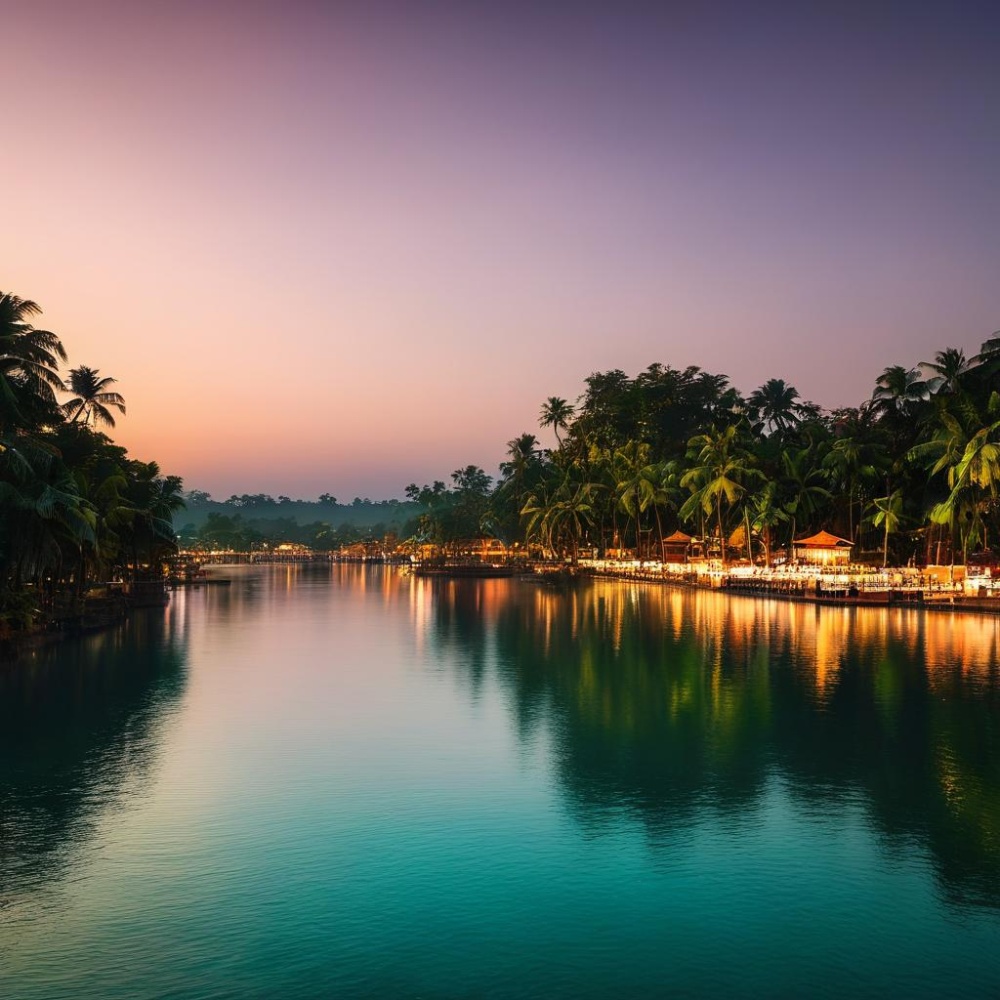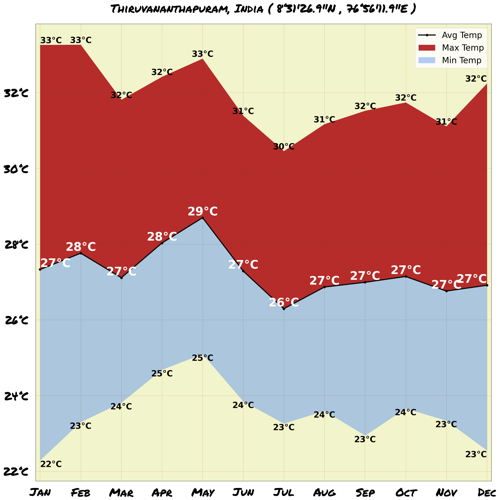Understand
Thiruvananthapuram, with a rich history dating back to 1000BC, is a fascinating city nestled on a narrow strip of land adorned with coconut and palm trees. Its name, derived from Sanskrit and Malayalam, means "City of Lord Anantha," referring to the serpent on which Lord Padmanabha/Vishnu reclines. As the largest city in Kerala, Thiruvananthapuram boasts a vibrant cultural heritage. Thiruvananthapuram holds a significant place in ancient literature, with mentions in Greek and Roman writings. It gained prominence when the Venad Dynasty assumed power in the southern region following the partition of the Kerala Empire in the 14th century. Though the rulers initially had their capital in Kollam, the town quickly emerged as a major trading center. The rise of Maharaja Marthanada Varma and the establishment of the Travancore Kingdom in the late 17th century marked a turning point for Thiruvananthapuram. The king dedicated the entire kingdom to Lord Padmanabha, making the city the capital and leading to its rapid expansion around the temple. During the British Raj, Travancore Kingdom was one of the most influential princely states, ranking as the third richest state among native states. Thiruvananthapuram flourished under royal patronage, becoming a prominent center for academics and culture. The city was praised for its lush greenery and eventually attained prosperity during the early 20th century. When India gained independence, Travancore merged into the Indian union, and Thiruvananthapuram remained the capital city after the formation of Kerala state in 1957. Thiruvananthapuram experiences a tropical climate without distinct seasons. The average maximum temperature reaches 34C, while the minimum temperature hovers around 21C. Humidity is high, peaking at around 90% during the monsoon season. Being the first city along the path of the southwest monsoon, Thiruvananthapuram welcomes its first showers in early June. Pre-monsoon showers are common in April and May, with an average rainfall of about 35 cm. While annual rainfall is comparatively low among Kerala districts, it still amounts to a substantial 180 cm. May, June, July, August, and October are the rainiest months, but showers occur frequently from April to November. For those seeking dry weather, the best time to visit is from December to March. In certain high-altitude locations, winter temperatures can drop to around 18C, while summer temperatures can soar up to 35C.
Map & Climate
Popular Foods
 Dish: Butter Chicken (Murgh Makhani)Butter chicken is a rich and creamy curry made with marinated chicken pieces cooked in a tomato-based sauce. The dish originated in the Indian subcontinent and gained popularity in Canada due to the large population of Indian immigrants. It's typically served with basmati rice and naan bread. Butter chicken contains meat – chicken.
Dish: Butter Chicken (Murgh Makhani)Butter chicken is a rich and creamy curry made with marinated chicken pieces cooked in a tomato-based sauce. The dish originated in the Indian subcontinent and gained popularity in Canada due to the large population of Indian immigrants. It's typically served with basmati rice and naan bread. Butter chicken contains meat – chicken.  Dish: BiryaniBiryani is a popular rice dish made by cooking Basmati rice with meat (usually chicken, goat, or fish), vegetables, yogurt, and a blend of spices. It originates from the Indian subcontinent and is often considered the national dish of Pakistan. It's known for its flavorful layers and distinct aroma. Biryani contains meat – primarily chicken, goat, or fish.
Dish: BiryaniBiryani is a popular rice dish made by cooking Basmati rice with meat (usually chicken, goat, or fish), vegetables, yogurt, and a blend of spices. It originates from the Indian subcontinent and is often considered the national dish of Pakistan. It's known for its flavorful layers and distinct aroma. Biryani contains meat – primarily chicken, goat, or fish.  Dish: SamosasSamosas are deep-fried or baked pastry snacks filled with a savory mixture of spiced potatoes, onions, peas, and sometimes meat. They originate from South Asia and have become a popular street food across India. Often served as an appetizer or a quick snack, samosas can be found at roadside stalls, train stations, and even weddings. Samosas can contain meat – typically potatoes, onions, and peas, but some varieties may include meat such as chicken or lamb.
Dish: SamosasSamosas are deep-fried or baked pastry snacks filled with a savory mixture of spiced potatoes, onions, peas, and sometimes meat. They originate from South Asia and have become a popular street food across India. Often served as an appetizer or a quick snack, samosas can be found at roadside stalls, train stations, and even weddings. Samosas can contain meat – typically potatoes, onions, and peas, but some varieties may include meat such as chicken or lamb. 




Comments
NO COMMENTS